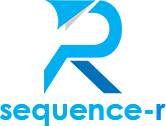Introduction:
In today’s digital age, sales emails have become a crucial tool for businesses to connect with potential customers. However, crafting a compelling sales email that grabs attention and drives conversions can be a challenging task. In this blog post, we will explore some key strategies and tips to help you write sales emails that captivate your audience and yield positive results.
- Understand Your Audience:
Before diving into writing a sales email, it’s essential to understand your target audience. Research their needs, pain points, and preferences to tailor your message accordingly. Personalization is key to grabbing attention and building a connection with your readers. - Craft an Engaging Subject Line:
The subject line is the first impression your email makes. Make it concise, intriguing, and relevant to your recipient’s interests. A compelling subject line increases the chances of your email being opened and read. - Start with a Strong Opening:
The opening paragraph of your sales email should be attention-grabbing and concise. Hook your readers by addressing a common pain point or offering a solution to a problem they might be facing. Show empathy and establish credibility to build trust from the start. - Focus on Benefits, Not Features:
When describing your product or service, emphasize the benefits it offers rather than just listing its features. Highlight how it can solve your recipient’s challenges or improve their lives. Use real-life examples or success stories to demonstrate the value you bring. - Keep it Concise and Scannable:
Busy professionals receive numerous emails daily, so it’s crucial to keep your sales email concise and easy to skim. Use short paragraphs, bullet points, and subheadings to break up the text and make it more digestible. Avoid jargon and unnecessary fluff. - Create a Clear Call-to-Action:
Every sales email should have a clear and compelling call-to-action (CTA). Whether it’s scheduling a demo, signing up for a trial, or making a purchase, make your CTA stand out. Use action-oriented language and provide a sense of urgency to encourage immediate action. - Personalize and Follow Up:
Personalization goes beyond addressing your recipient by name. Reference their specific needs or previous interactions to show that you’ve done your homework. Additionally, don’t forget to follow up on your initial email. A well-timed follow-up can significantly increase response rates.
Conclusion:
Writing a compelling sales email requires a combination of understanding your audience, crafting engaging content, and incorporating persuasive techniques. By following the strategies outlined in this blog post, you can enhance your email marketing efforts and increase your chances of converting leads into customers. Remember, practice and experimentation are key to finding the perfect formula for your unique audience. Happy writing!


